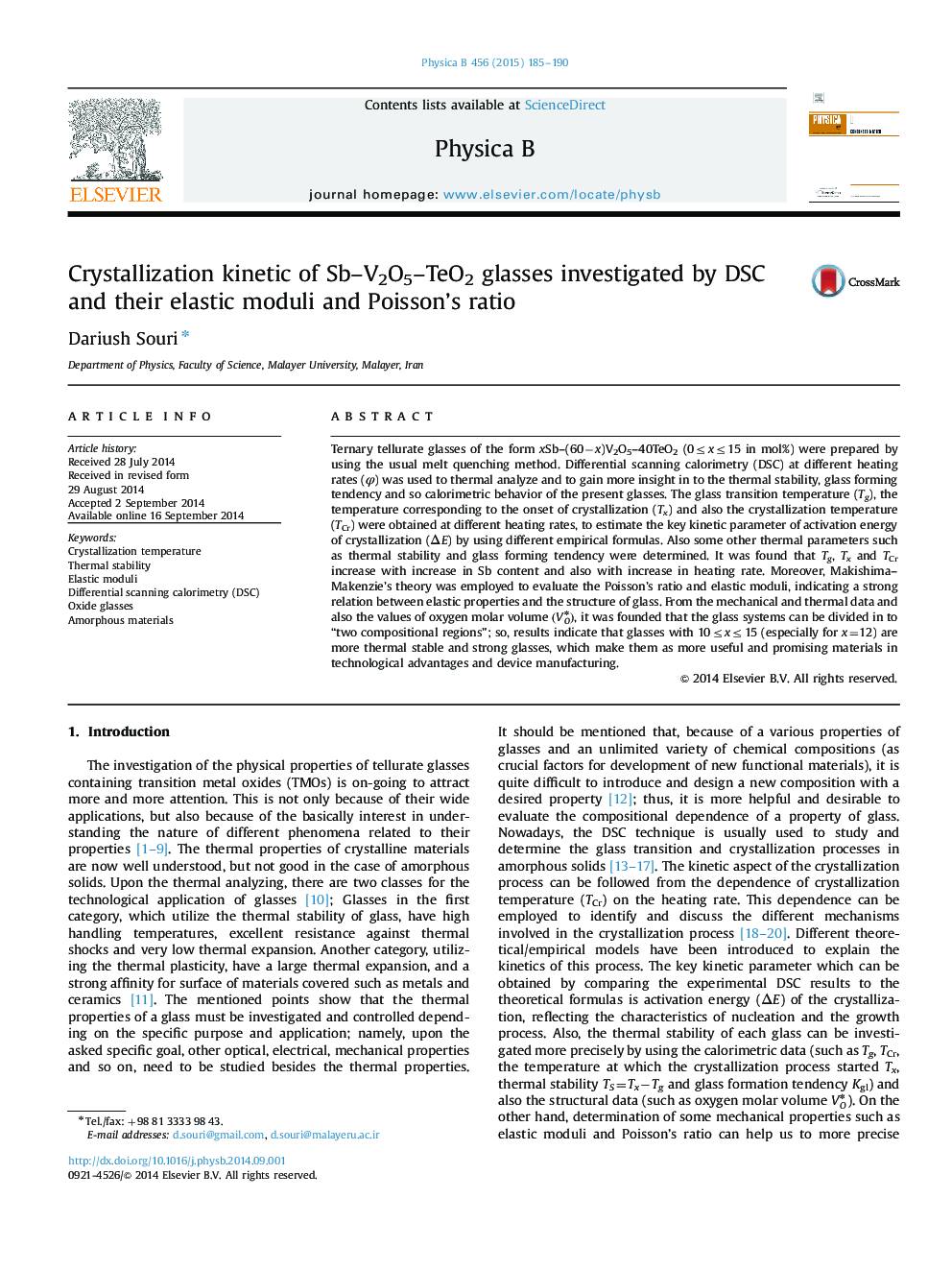| Article ID | Journal | Published Year | Pages | File Type |
|---|---|---|---|---|
| 1809302 | Physica B: Condensed Matter | 2015 | 6 Pages |
Ternary tellurate glasses of the form xSb–(60−x)V2O5–40TeO2 (0≤x≤15 in mol%) were prepared by using the usual melt quenching method. Differential scanning calorimetry (DSC) at different heating rates (φ) was used to thermal analyze and to gain more insight in to the thermal stability, glass forming tendency and so calorimetric behavior of the present glasses. The glass transition temperature (Tg), the temperature corresponding to the onset of crystallization (Tx) and also the crystallization temperature (TCr) were obtained at different heating rates, to estimate the key kinetic parameter of activation energy of crystallization (ΔE) by using different empirical formulas. Also some other thermal parameters such as thermal stability and glass forming tendency were determined. It was found that Tg, Tx and TCr increase with increase in Sb content and also with increase in heating rate. Moreover, Makishima–Makenzie’s theory was employed to evaluate the Poisson’s ratio and elastic moduli, indicating a strong relation between elastic properties and the structure of glass. From the mechanical and thermal data and also the values of oxygen molar volume (VO⁎), it was founded that the glass systems can be divided in to “two compositional regions”; so, results indicate that glasses with 10≤x≤15 (especially for x=12) are more thermal stable and strong glasses, which make them as more useful and promising materials in technological advantages and device manufacturing.
